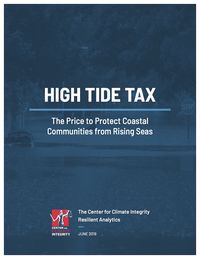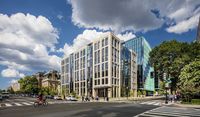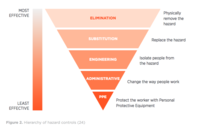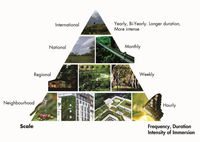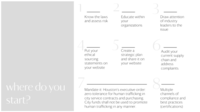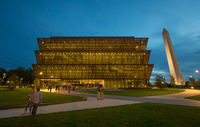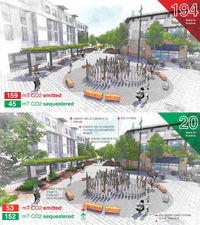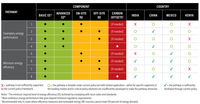News Brief
“Strengthening Transparency in Regulatory Science” is a draft rule requiring disclosure of personal health information.
A proposed rule from the U.S. Environmental Protection Agency (EPA) would limit which scientific studies can be used to make regulatory decisions, according to an analysis by Lisa Friedman of The New York Times. The Strengthening Transparency in Regulatory Science Proposed Rule calls for full transparency of underlying datasets, including the... Read more
News Brief
Defending against sea-level rise will be almost as expensive as building the interstate highway system, according to a recent report.
Protecting roads, railways, and other public infrastructure from rising seas is going to be expensive. A recent report from the Center for Climate Integrity and Resilient Analytics is the first to tally the costs—an estimated $400 billion over the next 20 years. “Protecting America from climate change will be the most all-encompassing... Read more
News Analysis
It’s a new idea that’s shaking up the industry: stringent performance standards for existing buildings.
Despite the withdrawal of the U.S. from the Paris Agreement, many cities and states across the country have been moving forward with ambitious climate commitments. Boston plans to be carbon neutral by 2050. In that same year, New York City has pledged to cut its emissions by 80%. Washington, D.C. hopes to slash its carbon in half by 2032.... Read more
News Brief
The internet of things has the potential to make us more resource efficient. But smart devices could also make us vulnerable to cyberattack.
Perhaps you’ve heard the harrowing stories of hackers accessing baby monitors and Nest thermostats. Well, it is only going to get worse, say experts. Some devices with “smart” capabilities (meaning they are able to interact with a wireless network) are best in class for energy efficiency. But with more and more destined to come on the market,... Read more
News Brief
Many carcinogens associated with buildings and construction are to blame for a variety of cancer cases.
Thanks to 13 major occupational carcinogens, 10,000 Canadians per year suffer from cancer, a recent report from the Occupational Cancer Research Centre claims. Many of these hazards are associated with buildings and the construction industry. The 13 (with the estimated number of cancer sufferers) are:
solar ultraviolet radiation (4,600... Read moreNews Brief
Filling a gap in whole-building life-cycle assessment, the Embodied Carbon Construction Calculator brings to light specific brands’ data.
Whole-building life-cycle assessment (WBLCA)—a way of calculating the environmental impacts of buildings based on the materials used—is a growing area of interest for the building industry, thanks in part to rating systems like LEED and the Living Building Challenge. But there’s a trove of data it doesn’t account for.
Most current WBLCA... Read more
News Brief
With LEED Positive, the LEED rating systems will move into the territory of regenerative design.
The U.S. Green Building Council (USGBC) has introduced “LEED Positive,” a vision for regenerative design driven by the LEED rating systems. Unveiled at Greenbuild 2019 in Atlanta, the new, long-term vision has several waypoints:
continued investment in LEED v4.1 for the foreseeable future the ability of existing buildings to achieve “... Read moreNews Brief
We can’t make progress on sustainability unless we meet people where they are, said former president Barack Obama at Greenbuild Atlanta.
Sustainability has to be for everyone or it won’t get real traction, suggested former U.S. President Barack Obama, speaking at Greenbuild 2019 in Atlanta.
Connecting the two most daunting issues of our planet—climate change and economic inequality—Obama noted, “It’s hard to figure out how we solve sustainability and deal with climate... Read more
News Brief
The new Design Datamap visualizes award-winning projects and connects to deeper wisdom.
Since 1997, The American Institute of Architects’ Committee on the Environment (COTE) has been giving its Top Ten awards to the world’s most sustainable building projects. That’s more than 200 projects with information and insight on how teams met their environmental goals. And Varun Kohli, head of sustainability and analytics at BuroHappold... Read more
News Brief
As part of a larger campaign to rid its products of toxics, the retail giant will no longer sell floor coverings with harmful stain and dirt repellents.
In a sign that the backlash against toxic stain and dirt repellents is growing, Home Depot has announced it will be phasing out carpets and rugs coated with per- and polyfluoroalkyl substances (PFAS). The new ban, effective December 31, 2019, is part of a larger chemical strategy that began in 2017 and also includes limitations on triclosan,... Read more
News Analysis
Contrary to the Emily Dickinson poem, hope is not the thing with feathers. To work, it’s got to have its feet firmly planted on the ground.
It’s the end of the world as we know it
And I feel fine.
–R.E.M.
It’s not just coming: it’s here. Climate change has crept up on us. Farms, entire ecosystems—even whole nations—are collapsing. Our food and fresh water supplies are gradually shrinking. More and more property and land are being destroyed. People are going to... Read more
News Analysis
A new project from HITT Contracting brings manufacturers, architects, engineers, and contractors together to experiment with technology.
The durability of self-growing bricks. Augmented reality for electrical and plumbing installation. The cost-effectiveness of low-voltage lighting. These are some of the innovations currently being tested at Co|Lab, a new building project from HITT Contracting, designed by William McDonough+Partners.
“Our goal for Co|Lab is to be our... Read more
News Brief
With SE 2050, structural engineers commit to eliminating embodied carbon from buildings.
“All structural engineers shall understand, reduce, and ultimately eliminate embodied carbon in their projects by 2050.” Simply worded but dauntingly difficult to achieve, that is the Structural Engineers’ 2050 (SE 2050) Challenge.
Structural elements like concrete and steel are a massive source of so-called embodied carbon—the... Read more
Feature
People wither physically and mentally without nature. Biophilic design is a remedy and a foundation for regenerative design all at the same time.
Sakhi Arora contributed to this report with interviews from her Master’s thesis: “Understanding and Integrating Biophilia in Work Environments for Achieving a More Human-Centric Model: From Theory to Practice.”
Charles Garnier’s Paris Opera House.
Frank Lloyd Wright’s Fallingwater.
The Ancestral Pueblo’s Mesa... Read more
Product Review
EP Henry pavers are the first products to use Solidia, which has a smaller carbon footprint than ordinary Portland cement.
Concrete is one of our most versatile building materials—and one of our worst carbon polluters. Manufacturing the main ingredient, ordinary Portland cement (OPC), accounts for approximately 5%–8% of anthropogenic CO2. With carbon in our atmosphere reaching critical levels, we need to find cement alternatives, and fast. There are few... Read more
News Brief
Building professionals push for ways to ensure “slave-free” buildings.
Almost 95% of the construction materials used to create any given building come from only 400 to 600 raw materials and 75 to 100 composite building products, according to Grace Farms Foundation. Yet supply chains are so vast and convoluted that they can mask many instances of human exploitation: forced labor, human trafficking, and child labor... Read more
News Analysis
The sustainable building sector has forgotten a vital tenet, says the NAACP, and now is the time to do something about it.
Green buildings are for the privileged.
That’s a really tough reality for most of us to face, but it’s our current state, according to Jacqueline Patterson, senior director of the environmental and climate justice program at the NAACP. She’s on a quest change that.
It all started when Patterson was researching sustainable... Read more
Product Review
Linoleum’s natural ingredients often make it the best resilient flooring option. Corques Liquid Linoleum is a fluid-applied version for seamless applications.
Linoleum is regarded as one of the most sustainable options for resilient flooring, and for good reasons. It’s made from natural materials—typically a combination of linseed oil, pine rosin, wood dust, cork, limestone, and colorants attached to a jute backing. And linoleum is a versatile flooring that has been manufactured in some form for more... Read more
News Brief
Even a garden or park can take decades to become carbon positive. With a little effort, it doesn’t have to be that way.
Life-cycle assessments and embodied carbon are gradually becoming a bigger focus in the architecture world. But even for project teams that carefully track carbon impacts, rarely does the accounting include the site’s landscape design. A new tool called Pathfinder helps teams fill that gap and create projects that sequester more carbon in the... Read more
News Brief
Achieving zero-carbon buildings is possible in the world’s biggest developing markets, but a new report recommends improvements.
The United Nations recently called for people everywhere to make the transition to zero-carbon buildings. Now, a new report from the World Resources Institute (WRI) finds that making this transition is feasible from a regulatory standpoint in several countries that have historically put little emphasis on energy efficiency or renewable energy.... Read more

